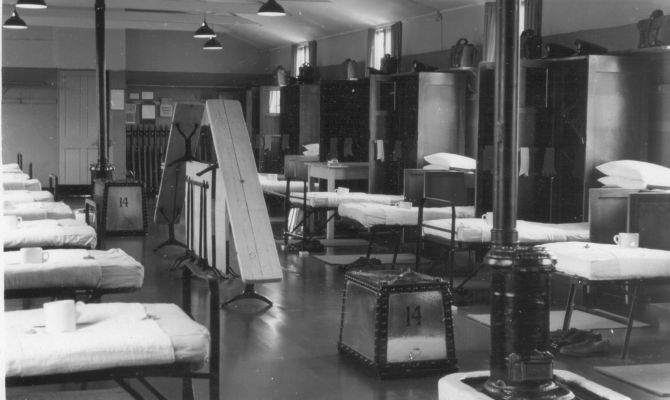Dave, that story reminded me, we had a lad called, "Fisher" in our spider at Pirbright, he was't a bad lad came from Hilltop, West Brom, he was spotless, but had (cheesy feet), any way one night after going to the NAAFI, we came back and while he was in the ablutions we ,made a "French Bed", just a laugh really. Then some so and so, thought after lights out it would be funny to tie some rope round his steel locker and attach it to his bed end. Anyway in comes Fisher in the dark we are all giggling under our blankets. He takes a great jump into his bed, the thing collapses and pulls over the steel locker. In the Guards the top of the steel locker comprised of large pack, on top, small pack, each side, best drill boots on top of small pack side by side kidney pouches, on top was our steel helmet. with the Guards issue name plate, toped by Regimental forage cap. Well you can imagine the noise, and the screams, his boots sailed through the air and smashed through the window opposite, showering the room with broken glass just as the, 'Duty Picket CSM' was passing. He came in screaming blowing his whistle to call out the Guard, the locker was smashed, so was the bed opposite, glass and kit everywhere. Lights, on Stand by your beds, no one owned up, fall in outside in a single file, each man take a fire bucket from around the spider and stand to attention with bucket held out in front arm locked chest height. Well we stood there for a good hour till the erk, owned up, him and poor old Fisher marched off to the Guard room, whole spider on a charge in morning, 252 (1914), loss 3 days pay plus 10/- each man for barrack room damage. Everyman spent the whole night cleaning up the spider and after Brekkers at 7.30, 4 hours drill on the main square, we did't do anything like that any more I can tell you. paul

